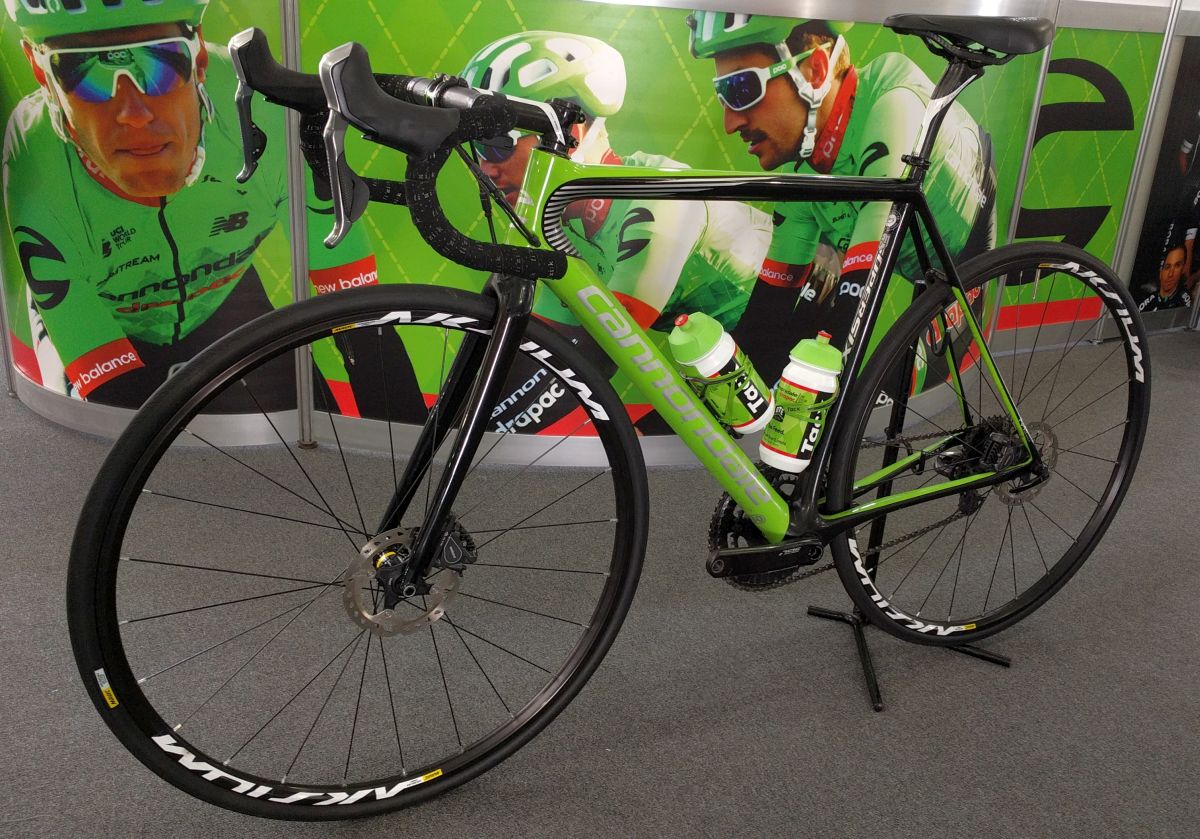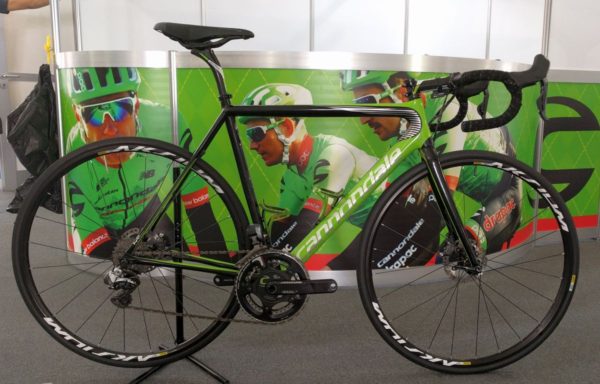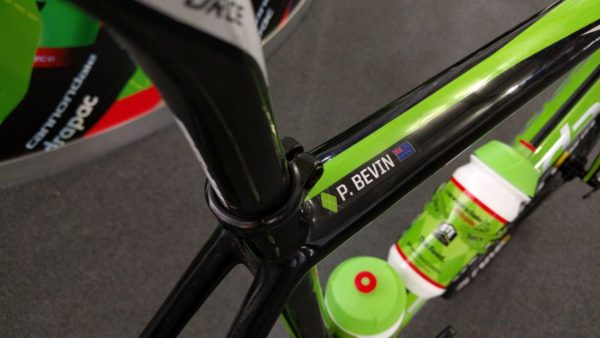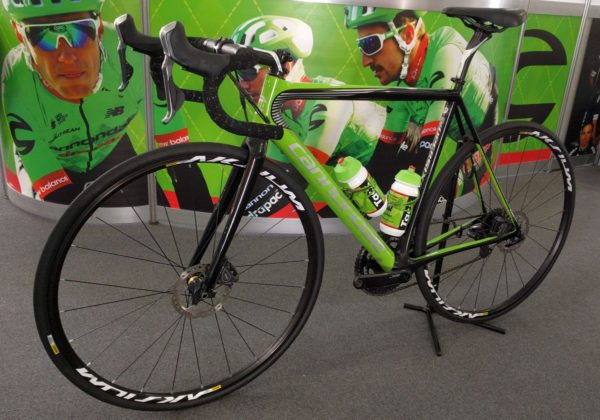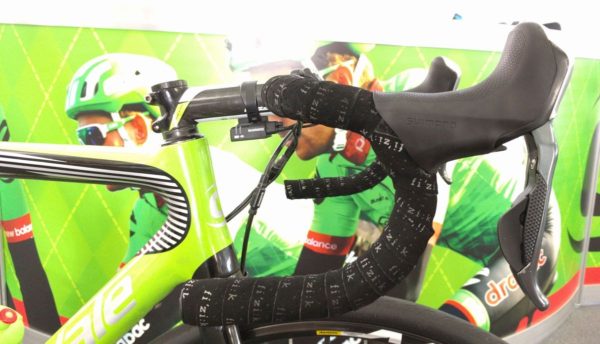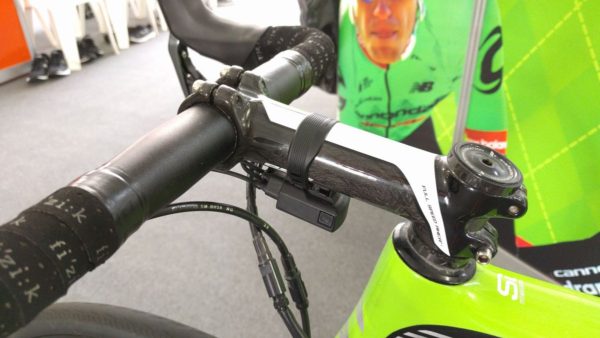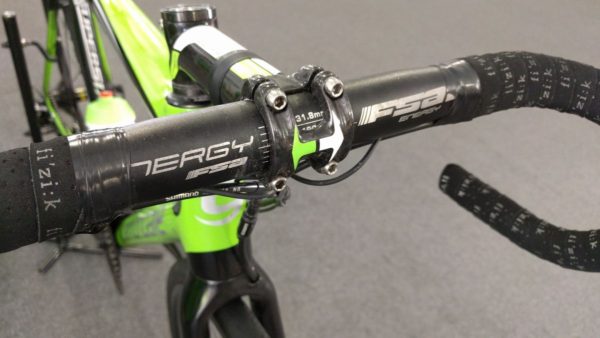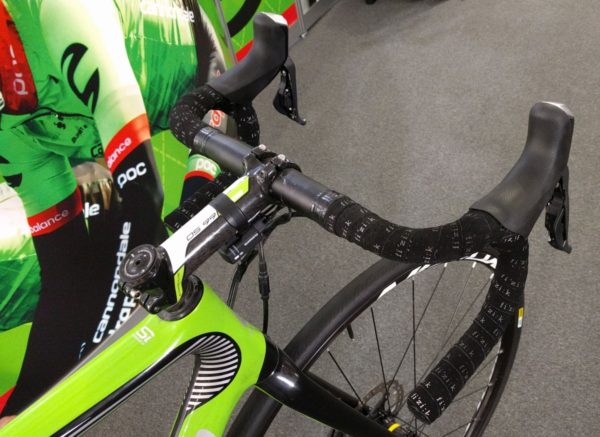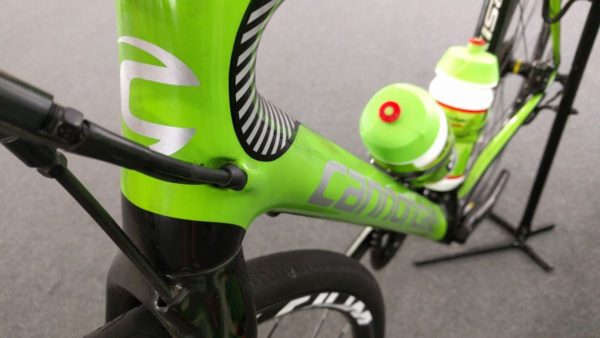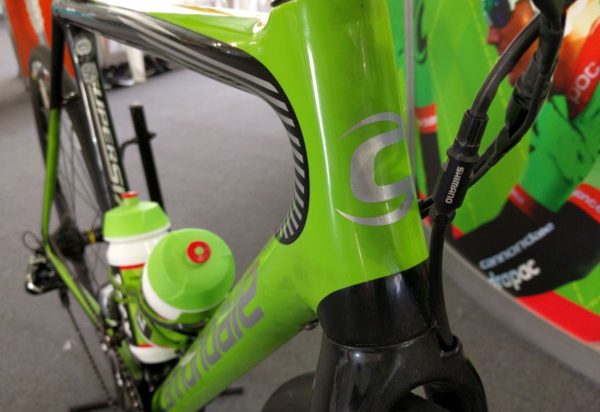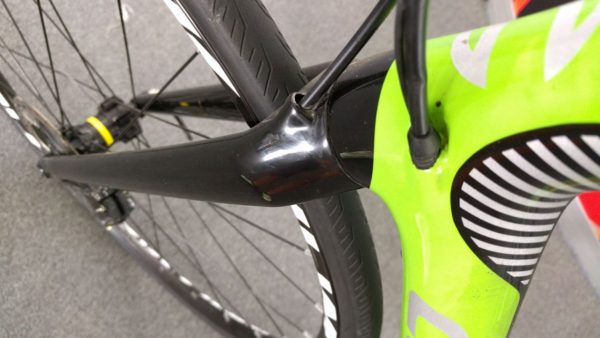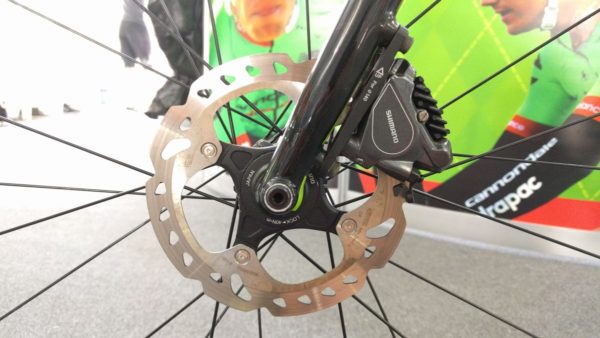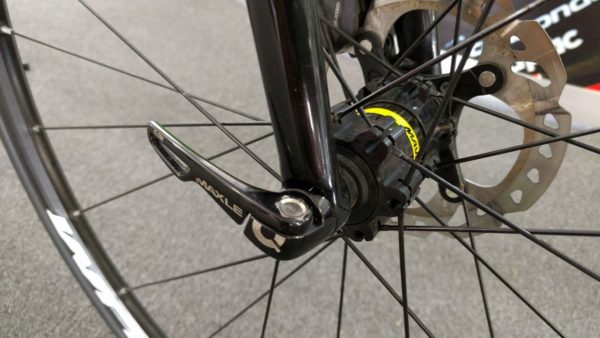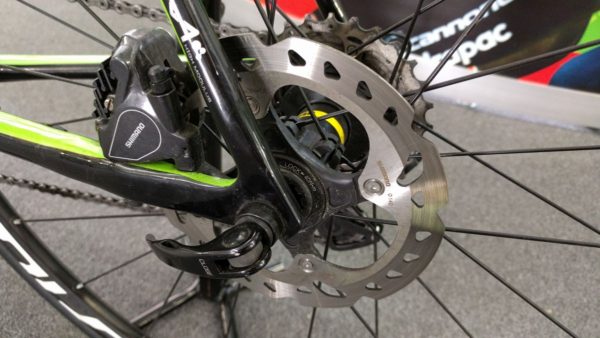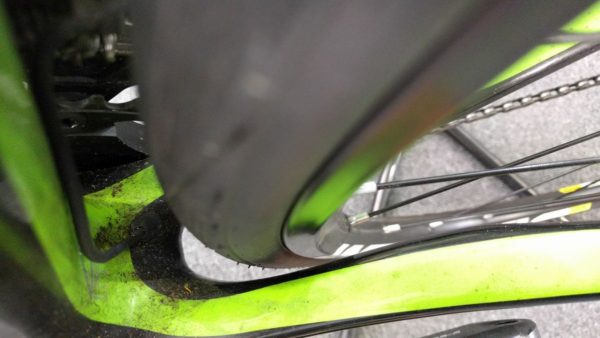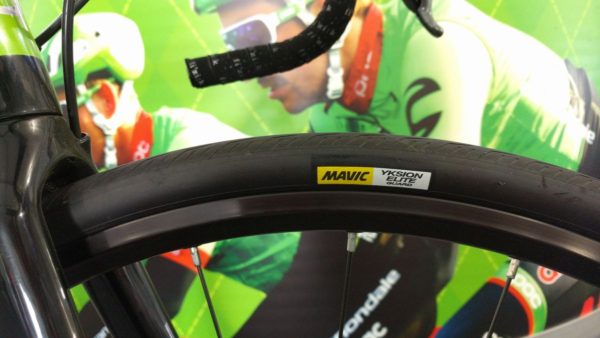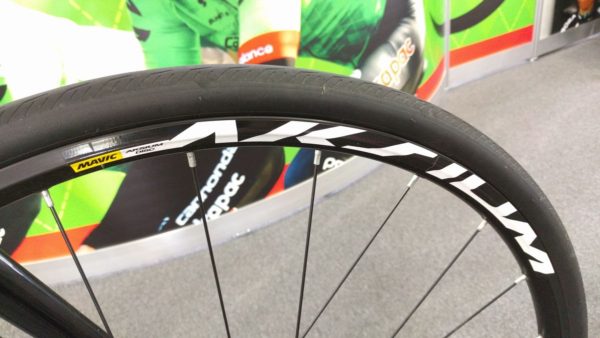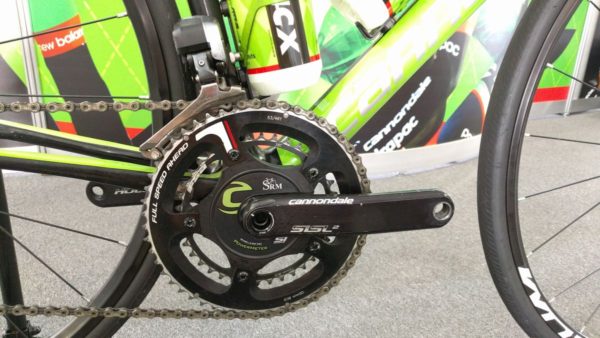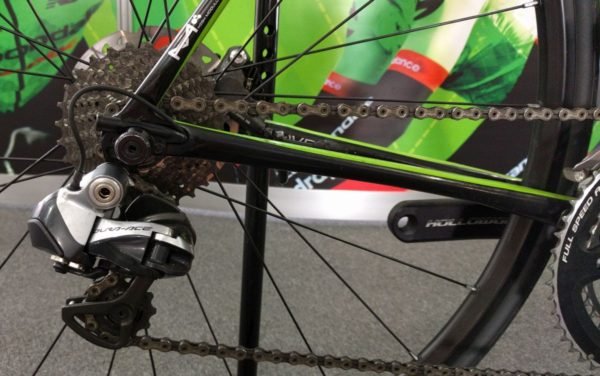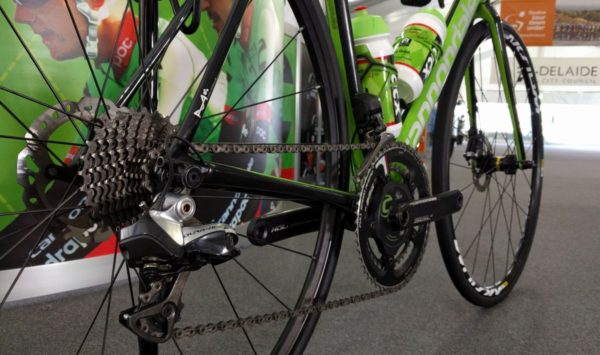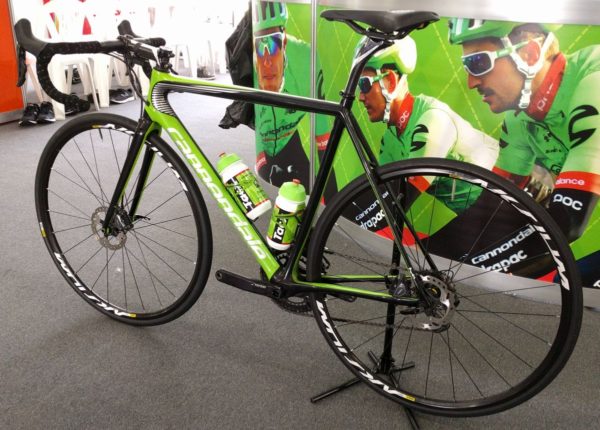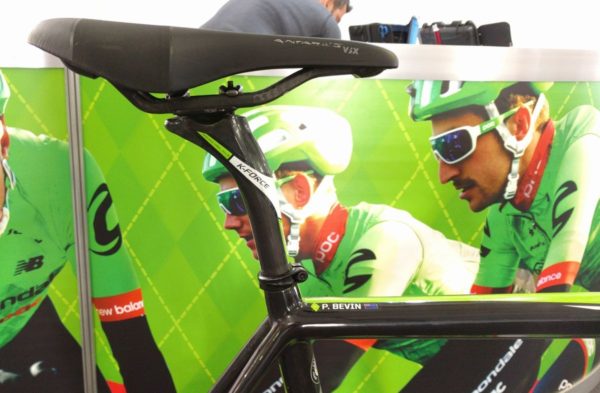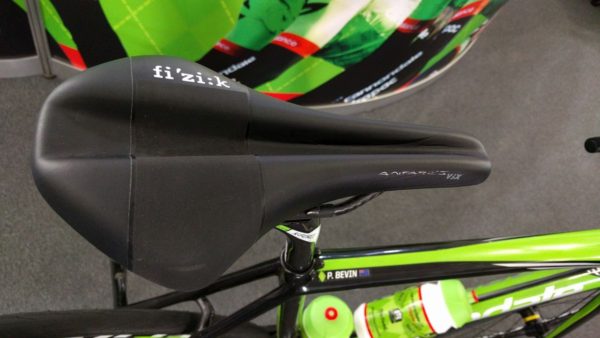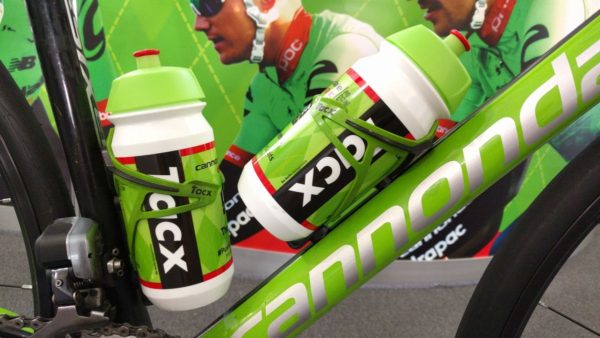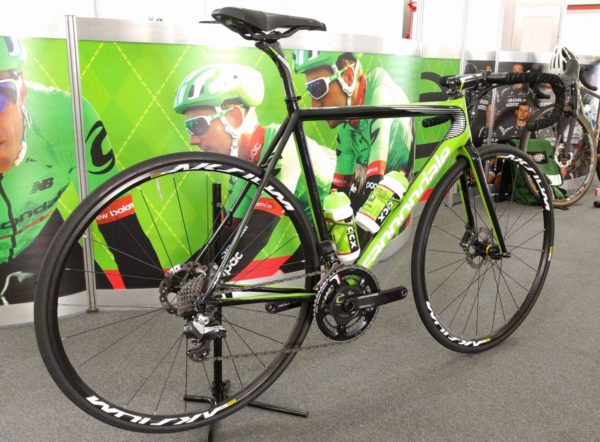Cannondale-Drapac is an American pro team, that made it to the bigtime of the World Tour in 2009. They’re headquartered in Boulder, CO but maintain a base of operations in Girona, Spain, a popular spot for many riders in the World Tour. Cannondale continues as title sponsor for 2017 with Drapac Capital Partners, an Australian-American management firm, on board as presenting sponsor.
Earlier in 2017, I spotted Paddy Bevin’s SuperSix EVO disc brake training bike in one of Adelaide’s local bike shops before the Tour Down Under began. Paddy was joined by the team and their mechanics a few days later, which gave the opportunity to photograph his complete training bike inside the Tour Down Under village. Click on through to see more of his Cannondale SuperSix EVO disc brake trainer…
Patrick “Paddy” Bevin is described by team general manager Jonathan Vaughters, as “a rider who seems to have it all”. Announced in August 2015 that Paddy signed a two-year contract with the team, he came onboard with nicely loaded palmarès, including high placings in the Herald Sun Tour (happening right now in Australia), Tour de Taiwan, and Tour de Korea.
For the 2017 season, the entire Cannondale-Drapac team is riding disc brakes, at least on their training bikes. Originally, the team was slated to use disc brakes at the 2017 Tour Down Under, but those plans were shelved. Rather, the team will debut disc brakes in competition at the 2017 Ruta Del Sol which begins on February 15.
For their training rides, Shimano’s ST-R785 Di2 hydraulic levers handle the chores related to braking and shifting.
FSA are the cockpit supplier to the team for 2017. Note the extreme length and slam of that carbon FSA OS-99 stem.
Oversized 31.8mm FSA Energy aluminum handlebars.
Hydraulic brake and electronic Di2 cables follow the same path to the interior of the frame, with the help of a little heat-shrink tubing.
The front brake housing is routed neatly inside the tapered fork, with the entry point angled to ensure no kinks or bends, but does leave a bit of extra opening where water and dirt can get inside the fork’s routing channel.
At the business end of things, Shimano’s RS785 hydraulic calipers are flat-mounted to the EVO’s all-carbon fork, with its 12mm thru-axle. Shimano centerlock 140mm rotors are standard equipment across the board at Cannondale-Drapac.
A Maxle Ultimate by SRAM’s Rockshox keeps the Mavic Aksium front wheel locked securely in place.
The Shimano RS785 caliper flat mount for the rear as well, but this Cannondale frame eschews a thru-axle in favor of a standard quick release. Will this change in the future with talk of a standard being set for World Tour racing? i.e. 160mm rotors front and rear, 100 x 12mm thru-axle front and 142 x 12mm for the rear.
I appreciate mechanics allowing me to photograph the bike in its real condition – almost immediately after a training ride. They usually go out of their way to make sure everything is spotless clean to keep sponsors happy, but this is a training bike after all. The 700c x 25mm Mavic Yksion Elite tire has plenty of room to spare, suggesting a 28mm or even 30mm would likely fit between the stays of the SuperSix EVO.
Mavic Aksium Disc Brake wheels for Cannondale-Drapac’s training bikes. They aren’t light, but are durable and get the job done for a reliable clincher disc brake setup.
SRM supply power measuring technology to the team, and Cannondale’s own SiSL2 cranks grace the bike. Interestingly, the FSA 53T big chainring is marked as part of a 53/46 pair, although Paddy is riding a smaller 38T inner chainring, so we guess he might not get the most optimized shifting with the 53’s misaligned shift ramps. The crank was sans pedals during these photographs, as team mechanics were hurriedly preparing other bikes as I perused this one.
Paddy’s training bike does not feature the oversized Ceramic Speed pulley system found on the Shimano Dura-Ace 9070 Di2 derailleurs of the team’s race bikes. Watch this space for an article on TJ Slagter’s race bike that features that technology.
11-28 cassettes, almost the standard choice for every team in the World Tour, at least at the 2017 Tour Down Under.
FSA K-Force carbon seatpost with ~20mm of setback.
Paddy prefers the comfort of a Fizik Antares VSX saddle, with its deeper relief channel and carbon rails.
Tacx supply the team’s bottles and cages.
Cannondale-Drapac Pro Cycling Team
Article and photos by Gravel Cyclist. Jayson O’Mahoney is the Gravel Cyclist: A website about the Gravel Cycling Experience.
